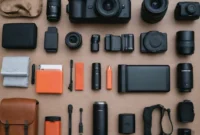How to learn a new language while traveling? It’s a question that many travelers ponder and with good reason. Learning a language opens doors to new cultures, deeper connections with locals, and a richer travel experience. Mastering a few basic phrases can transform your journey whether you’re a seasoned traveler or a first-timer.
Imagine strolling through a bustling market in Marrakech, confidently haggling for spices in Arabic, or navigating the vibrant streets of Tokyo, seamlessly ordering a steaming bowl of ramen in Japanese. These moments, enriched by language, create lasting memories and a sense of accomplishment. But how do you achieve this linguistic fluency while exploring new lands?
Choosing the Right Language: How To Learn A New Language While Traveling
Learning a new language while traveling can be a rewarding experience, but choosing the right language is essential to maximize your learning and enjoyment. There are several factors to consider when making this decision, such as your interests, travel destinations, and language learning goals.
Factors to Consider
Before diving into language learning, assessing your personal preferences and travel plans is crucial. This will help you narrow your options and choose a language that aligns with your interests and goals.
Personal Interests: What topics or cultures fascinate you? Learning a language spoken in a region known for its art, cuisine, or history can enhance your travel experience and deepen your understanding of the culture. For example, if you’re passionate about music, learning Spanish could open doors to exploring the vibrant music scene in Latin America.
Travel Destinations: Where do you plan to travel? If you have specific destinations in mind, learning the local language can significantly improve your interactions with locals, enhance your understanding of the culture, and make your travel experience more authentic. For instance, if you’re planning a trip to Italy, learning Italian can make navigating local markets, ordering food, and engaging in conversations with locals much easier.
Language Learning Goals: What do you hope to achieve through language learning? Are you aiming for fluency, basic conversational skills, or simply understanding essential phrases? Setting realistic goals will help you choose a language that aligns with your learning aspirations and determine the level of commitment required.
Popular Languages for Travel
Several languages are widely spoken in popular travel destinations, making them excellent choices for language learners.
Spanish: Spoken in over 20 countries across Latin America, Spain, and parts of the United States, Spanish is a versatile language that can open doors to a wide range of travel experiences.
French: Widely spoken in France, Canada, and parts of Africa, French is a language of art, culture, and diplomacy, making it a valuable asset for travelers interested in exploring these regions.
Mandarin Chinese: With over 1 billion speakers worldwide, Mandarin Chinese is a language of growing global importance. Learning Mandarin can benefit travelers interested in exploring China and other parts of Asia.
Arabic: Spoken in over 20 countries across the Middle East and North Africa, Arabic is rich in history and culture. Learning Arabic can open doors to exploring these regions and understanding their unique perspectives.
Benefits of Learning the Local Language, How to learn a new language while traveling

Learning the language spoken in your destination country can significantly enhance your travel experience.
Improved Communication: You can communicate more effectively with locals, understand cultural nuances, and navigate everyday situations more easily.
Cultural Immersion: Learning the local language allows you to delve deeper into the culture and better understand the local customs, traditions, and perspectives.
Enhanced Travel Experience: You can explore off-the-beaten-path destinations, interact with locals on a deeper level, and gain a more authentic and enriching travel experience.
Personal Growth: Learning a new language can be a challenging and rewarding experience, boosting your cognitive skills, expanding your horizons, and fostering a sense of accomplishment.
Immersive Learning Strategies
Learning a language while traveling is about more than just memorizing vocabulary and grammar rules. It’s about immersing yourself in the language and culture, allowing yourself to be surrounded by it and experience it firsthand. This is the most effective way to truly internalize the language and gain a deeper understanding of the culture.
Immersion Strategies
Immersion is the key to unlocking fluency. It’s about creating an environment where you’re constantly exposed to the language, making it a natural part of your daily life. Here are some strategies to create immersive learning experiences while traveling:
Interacting with Locals
Engaging in conversations with locals is one of the most effective ways to immerse yourself in a language. It’s a chance to practice your speaking skills, learn new vocabulary, and gain a deeper understanding of the culture. Here are some tips for interacting with locals:
Start small: Don’t be afraid to start with simple phrases like “hello,” “thank you,” and “please.” As you become more comfortable, you can gradually expand your vocabulary.
Use language learning apps: Apps like Duolingo, Babbel, and Rosetta Stone can help you learn basic phrases and vocabulary before you travel. You can even use them to practice your pronunciation and grammar.
Be patient: It takes time to become fluent in a new language. Don’t get discouraged if you make mistakes. The important thing is to keep practicing.
Find language exchange partners: There are many online platforms and websites where you can connect with native speakers who are also learning your language. This is a great way to practice your speaking and listening skills.
Watching Local TV Shows and Movies
Watching local TV shows and movies is a fun and engaging way to learn a language. It exposes you to the natural rhythm and flow of the language, as well as the cultural nuances and slang that you might not find in textbooks.
Start with subtitles: Watching with subtitles in your native language can help you follow the story and understand the dialogue. As you become more comfortable, you can gradually switch to subtitles in the target language or even try watching without subtitles.
Choose shows and movies that interest you: This will make learning more enjoyable and engaging. If you enjoy comedies, watch local comedies. If you prefer documentaries, watch local documentaries.
Pay attention to the visuals: Even if you don’t understand every word, you can still learn a lot by paying attention to the visuals. For example, you can learn the names of different objects, places, and people.
Use online resources: Many online resources can help you understand the dialogue in TV shows and movies. For example, you can find transcripts, glossaries, and explanations of cultural references.
Reading Local Newspapers and Magazines
Reading local newspapers and magazines is another great way to immerse yourself in the language and culture. It exposes you to current events, local customs, and the way people communicate in everyday life.
Start with simple articles: Choose articles about topics you are familiar with or written in a simple style. As you become more comfortable, you can gradually move on to more challenging articles.
Use online dictionaries and translation tools: Don’t be afraid to use online dictionaries and translation tools to help you understand unfamiliar words and phrases.
Pay attention to the language used: Notice how people express themselves in writing. Pay attention to the vocabulary, grammar, and sentence structure.
Try reading aloud: This will help you improve your pronunciation and fluency.
Final Review
Learning a language while traveling is a rewarding journey beyond simply acquiring vocabulary. It’s about embracing new cultures, challenging yourself, and discovering the world through a different lens. So, pack your bags, download your language apps, and get ready to unlock a world of possibilities. The language learning journey is as exciting as the destinations themselves, and the rewards are immeasurable.
Quick FAQs
What are some essential language-learning apps for travelers?
Popular options include Duolingo, Babbel, Rosetta Stone, Memrise, and HelloTalk. Each app has its strengths, so try a few to find the best fit for your learning style.
How much time should I dedicate to language learning while traveling?
Even 15-20 minutes daily can make a difference. Try incorporating language learning into your routine by listening to podcasts during your commute or practicing phrases while waiting in line.
Is it better to learn a language before or during a trip?
Learning some basics beforehand gives you a foundation, but immersion is key. Start learning before your trip, then continue and expand your knowledge during your travels.





